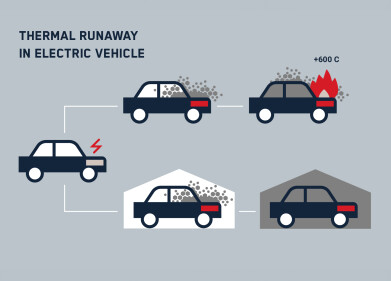Health & Safety
Grimy windows could be harbouring toxic pollutants
Nov 01 2022
Dirty windows can harbour potentially harmful pollutants under protective films of fatty acids from cooking emissions – and these can hang around over long periods of time.
According to a new study, led by researchers at the University of Birmingham, the fatty acids contained within cooking emissions are highly stable and not easily broken down in the atmosphere.
That means that when they hit a solid surface, like a window, they form a self-organised thin film which builds up over time and will only be very slowly broken down by other chemicals in the atmosphere. During this process, the film will become rougher and attract more water from the humidity in the air. In addition, toxic pollutants can become trapped underneath this persistent crust and are then protected from breakdown in the atmosphere.
Senior author Dr Christian Pfrang said: “The fatty acids in these films are not, by themselves, particularly harmful – but because they are not being broken down, they are effectively protecting any other pollutants that might be trapped underneath.”
The study, featuring on the front cover of Environmental Science: Atmospheres , was carried out in partnership with experts from the University of Bath, Diamond Light Source and ISIS Neutron and Muon Source in the UK, and the Institut Laue-Langevin in France.
The team worked on laboratory ‘proxies’ – samples of material engineered in the lab to approximate ‘real world’ samples. These were spun into super-thin films of pollution, just a few tens of nanometres in thickness.
The researchers used both neutrons and X-rays to study the nano-scale composition of the films and the changes in their surface structures. By changing the humidity and amount of ozone – a key pollutant indoors and outdoors – the researchers were also able to mimic the behaviour of the films over time.
They found that the self-organised arrangement within the films in repeating molecular sheets – a so-called lamellar phase – made it difficult for smaller molecules, like ozone, to access the reactive parts of the fatty acids within these structures. Once deposited and exposed to ozone, the surfaces of the films became less smooth and increasingly likely to take up water, an effect which also has implications for the formation and lifetime of aerosols in the atmosphere.
Digital Edition
AET 28.2 April/May 2024
May 2024
Business News - Teledyne Marine expands with the acquisition of Valeport - Signal partners with gas analysis experts in Korea Air Monitoring - Continuous Fine Particulate Emission Monitor...
View all digital editions
Events
Jul 30 2024 Jakarta, Indonesia
China Energy Summit & Exhibition
Jul 31 2024 Beijing, China
2024 Beijing International Coal & Mining Exhibition
Aug 07 2024 Beijing, China
IWA World Water Congress & Exhibition
Aug 11 2024 Toronto, Canada
Aug 25 2024 Stockholm, Sweden and online









.jpg)








